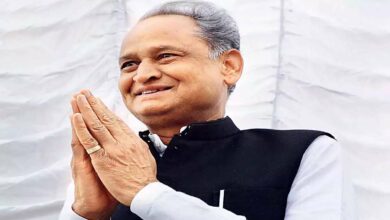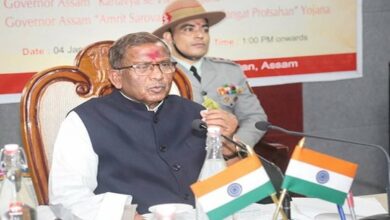Trending Now India
Withdrawal of Indian and Chinese troops begins in Demchok and Depsang plains of Ladakh
Ladakh: According to defense sources, the disengagement of Indian and Chinese soldiers has begun at two locations of contention in the Demchok and Depsang Plains in the Eastern Ladakh region.
The Indian forces have begun withdrawing their equipment to rear positions in their respective regions in accordance with the agreements reached between the two parties, they added.

The more than four-year military stalemate in eastern Ladakh came to an end on October 21 when India declared that it and China had achieved an agreement on patrols along the Line of Actual Control (LAC).
Defense Minister Rajnath Singh said that the two nations have agreed to return to the “ground situation” on the basis of equal and mutual security during a speech on October 24 in New Delhi.
Restoring “patrolling and grazing to traditional areas” is part of this, he said.
The improvement in relationships, according to Singh, is due to the “power of engaging in continuous dialogue because, sooner or later, solutions will emerge.”
“To address their disagreements in specific places along the LAC, China and India have engaged in diplomatic and military discussions. At the second Chanakya Defence Dialogue, he gave the keynote lecture and said, “A wide consensus has been reached to restore the ground situation based on the principles of equal and mutual security.”
In a meeting with Chinese President Xi Jinping on the fringes of the BRICS Summit in Russia on Wednesday, Prime Minister Narendra Modi praised the two nations’ agreement on patrolling procedures along the LAC in eastern Ladakh.
According to Prime Minister Modi, bilateral relations should continue to be built on mutual trust and border peace and stability should continue to be a top priority for both nations.
According to the prime minister, the connection between China and India is crucial for world peace, stability, and advancement in addition to the two nations’ citizens.
Chinese military activities in 2020 triggered the Indian-Chinese border conflict in eastern Ladakh along the LAC. The two countries’ ties were severely strained as a result of this episode, which caused ongoing tensions.
When Prime Minister Narendra Modi and President Xi Jinping met, Foreign Secretary Vikram Misri told reporters during a media briefing on the sidelines of the BRICS summit in Kazan that the two leaders “welcomed the agreement reached between the two sides through sustained dialogue over the last several weeks in diplomatic as well as military channels.”
“PM Modi emphasized how crucial it is to prevent disagreements on issues pertaining to boundaries from upsetting the calm and quiet along our borders. According to the Foreign Secretary, the two presidents agreed that the special representatives on the India-China boundary issue are essential to both resolving the issue and preserving peace and quiet along the border.
According to Misri, the two leaders also examined the current status of their bilateral ties from a long-term and strategic standpoint.
“We can go back toward the road of normalizing our bilateral ties after peace and tranquility have been restored in the border regions. Using the appropriate formal bilateral dialogue procedures, including at the level of our respective foreign ministers, officials will now explore improving strategic communication and stabilizing bilateral ties, Misri said.
Speaking at a function in New Delhi on October 22, External Affairs Minister S Jaishankar said that India and China have struck a patrolling arrangement agreement that will return the situation along the Line of Actual Control (LAC) to its pre-May 2020 state.



